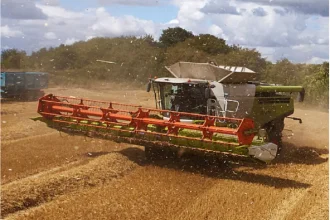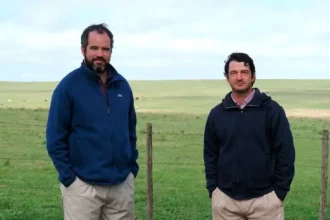In a context of increasingly evident climate change, drought has become an imminent threat to natural ecosystems in many regions of the world. This phenomenon not only affects water availability for communities and agriculture, but also significantly increases the risk of forest fires, reaching historic levels in several countries. In this article, we explore how this prolonged drought is transforming forested landscapes and increasing vulnerability to natural disasters, with profound impacts on biodiversity and human security.
Persistent drought threatens forests and ecosystems
Prolonged drought has decimated water resources in vast forested areas, leaving trees and vegetation in a state of extreme stress that compromises their survival. In regions such as the Mediterranean and parts of Latin America, periods without rain have exceeded historical thresholds , causing soil desiccation and the mass death of tree species. This situation not only weakens ecological structures but also disrupts natural cycles such as pollination and plant regeneration, threatening the stability of entire ecosystems.
Furthermore, the impacts extend to the wildlife that depends on these forests for habitat and food. Animals such as deer, birds, and small mammals face resource shortages, leading to forced migrations or increased mortality. In some cases, drought encourages the proliferation of pests and invasive species, such as the bark beetle, which take advantage of tree weakness to expand rapidly. This creates a vicious cycle that exacerbates environmental degradation and reduces forests' ability to act as carbon sinks.
Finally, the threat to ecosystems goes beyond the local level, influencing global climate patterns. Dry forests release more CO2 as organic matter decomposes, contributing to global warming and perpetuating drought. Experts warn that without urgent interventions , such as reforestation and sustainable water management, these ecosystems could collapse irreversibly, leaving legacies of desertification that will last for generations.
Forest fire risk at record levels
The risk of wildfires has escalated to alarming proportions due to the drought, with dry conditions turning vegetation into highly flammable fuel. In prone areas like California and Australia, danger levels have reached record levels, surpassing thresholds previously considered exceptional. Strong winds and high temperatures exacerbate this situation, facilitating the rapid spread of fires that can devastate thousands of hectares in a matter of hours.
Fires not only destroy habitats but also endanger human lives and property in areas near forests. Rural and peripheral urban communities have seen an increase in emergency evacuations, with skyrocketing economic costs for fire suppression and recovery. Furthermore, air quality deteriorates dramatically, affecting entire populations and contributing to visibility problems that complicate fire control.
In the long term, these historic events permanently alter the landscape, promoting soil erosion and biodiversity loss. Natural regeneration is hampered by continued drought, which prevents forests from recovering and increases future vulnerability. Authorities and scientists call for preventive measures, such as forest fuel management and satellite monitoring, to mitigate these growing risks in an increasingly dry world.
In short, persistent drought is not just a climate challenge, but a crisis that raises the risk of wildfires to unprecedented levels, threatening the integrity of our ecosystems and collective security. It is imperative that governments, communities, and international organizations act in a coordinated manner to promote sustainable practices and reduce greenhouse gas emissions. Only then can we protect the forests that are vital to planetary balance and human well-being.


















